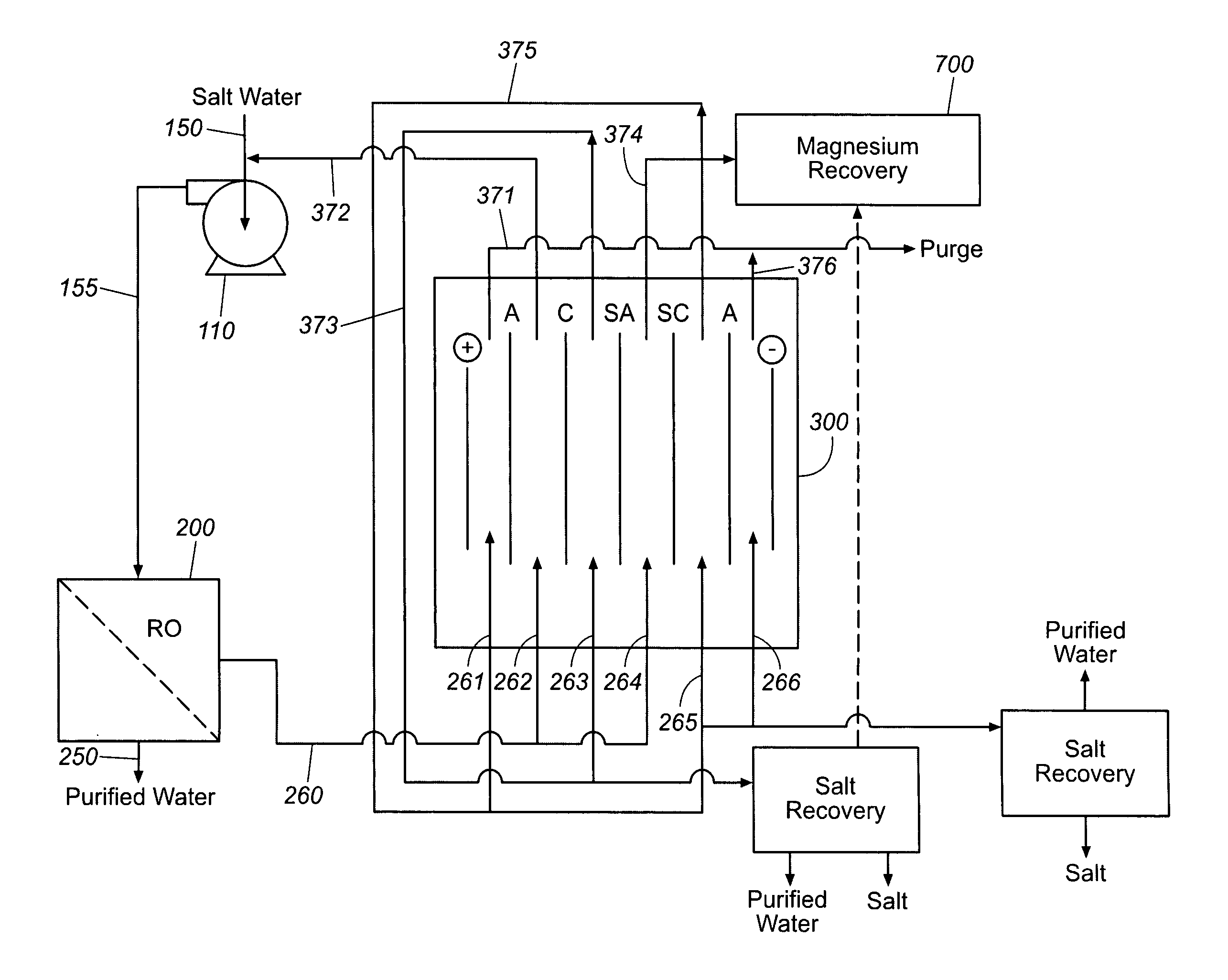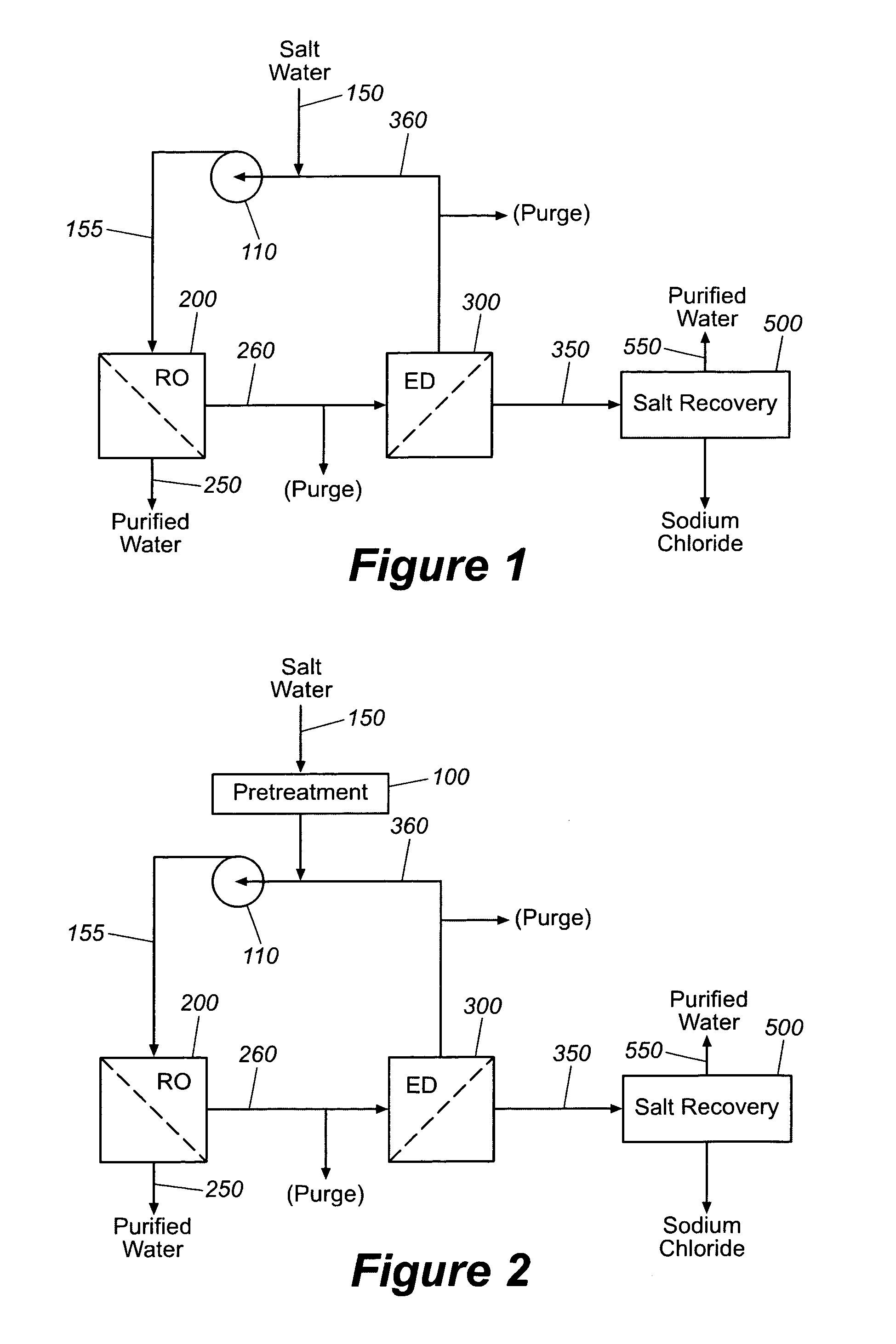Production of purified water and high value chemicals from salt water
a technology of high-value chemicals and salt water, which is applied in the direction of fluid pressure measurement, liquid/fluent solid measurement, peptide, etc., can solve the problems of increasing the cost of water, increasing the strain on the world's fresh water supply, and longer start-up lead time, so as to efficiently recover the purified water and other valuable chemicals.
- Summary
- Abstract
- Description
- Claims
- Application Information
AI Technical Summary
Benefits of technology
Problems solved by technology
Method used
Image
Examples
example 1
[0130]This example shows the operation of an apparatus of the present invention to produce electrodialysis concentrates having high concentrations of sodium chloride.
[0131]A laboratory apparatus was constructed that included an Aqua Whisper 170 gallon per day (GPD) reverse osmosis (RO) unit available from Beard Marine Group, Miami, Fla., and a TS-2 electrodialysis (ED) unit (Tokuyama Corp., Tokyo) containing ten pairs of Neosepta ACS and CMS univalent-ion selective membranes (available from Tokuyama Corporation, SEC System Dept., Tokyo). Seawater (at about 3% by weight salt) was fed to the RO unit. Purified water was produced in the permeate stream from the RO unit, and the RO retentate was fed to the ED unit, which produced a diluate stream and a concentrate. The salt content of selected streams was measured with a CEM labware 9000 Moisture Analyzer, which provided an actual measurement of total dissolved solids (tds). Because substantially all of the dissolved solids in seawater a...
PUM
| Property | Measurement | Unit |
|---|---|---|
| specific gravity | aaaaa | aaaaa |
| specific gravity | aaaaa | aaaaa |
| pressures | aaaaa | aaaaa |
Abstract
Description
Claims
Application Information
 Login to View More
Login to View More - R&D
- Intellectual Property
- Life Sciences
- Materials
- Tech Scout
- Unparalleled Data Quality
- Higher Quality Content
- 60% Fewer Hallucinations
Browse by: Latest US Patents, China's latest patents, Technical Efficacy Thesaurus, Application Domain, Technology Topic, Popular Technical Reports.
© 2025 PatSnap. All rights reserved.Legal|Privacy policy|Modern Slavery Act Transparency Statement|Sitemap|About US| Contact US: help@patsnap.com



